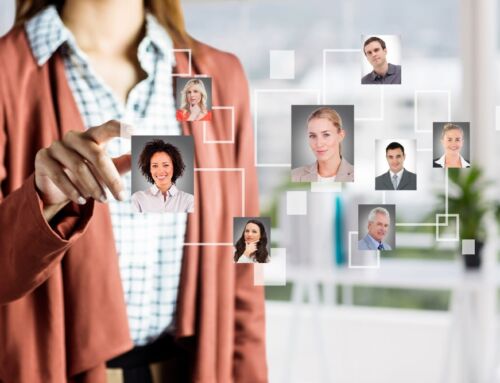147% better performance compared to others.
25-65% less turnover.
37% fewer absences.
According to a recent Gallup poll, those are just a few of the benefits of excellent employee engagement.
But while the benefits are clear, less than 50% of executives know how to improve it. Enter gamification.
Gamification: a growing HR trend
Gamification is a growing trend in employee engagement that uses a digital environment to help employees reach certain goals and objectives. The employee plays a game that offers points, status, and rewards as they improve the skills, goals, or objectives the company is trying to meet.
The theory is that everyone likes games and that we all like a bit of friendly competition and the rewards that come with it.
With increased social media usage, the popularity of mobile apps, and the increase in complexity in mobile technology, people stay connected and play games more than ever before. Gamification is a natural fit into the worlds of many employees. It can make them more engaged and productive in a fun, easy, and accessible way. Around 55% of American workers say they would like to work for a company that uses gamification (Dupress).
The art of gamification
Some people may hear the word game and imagine mindlessly using an app or view it as a waste of time. But do not let the word gamification fool you. The games are fun, but they are business-oriented. Some people might want to view it as a form of behavior modification using technology. But that does not have the same ring to it as gamification.
This digital system can be superior in many ways:
It can reach everyone in the entire company with the click of a button.
It has a much smaller cost compared to physical rewards and motivators.
The rewards and achievements are displayed and longer lasting.
It provides instant feedback.
Gamification is good at engaging and motivating employees. They learn new skills, new behaviors, and new ways of solving problems. The system of rewards and achievements in the games activates reward pathways in the limbic system and amygdala, creating change in the brain, as we discovered in our Neuroscience for business series recently.
Gamification uses consistent positive feedback to increase motivation. It breaks down complex tasks into simple tasks that the brain can learn over time, without as much stress or fatigue. It also taps into the brain’s ancestral status and power reward system.
Many times classic rewards systems can suffer from habituation. Once the brain adjusts to a certain reward, the reward no longer has the same impact, lessening the amount of motivation it gives the person. Games can easily create a system of increasing levels of power and status as users progress through the levels. The brain is continually reactivated at each new level of reward.
Game set-up
Gamification, at its most effective, has certain qualities that help make it more engaging, according to Bunchball founder, Rajat.
- Collaboration
- Community
- Competition
- Points
- Leveling up
- Goals
- Badges
- Fast feedback
- Transparency
- Onboarding
If you have every played on a tablet or a phone app, you will recognize most, if not all of those. Often the most addictive games are the ones that do those things the best. When looking for an app or game to use, make sure to try it first and see if it has all those qualities.
When starting out, make sure there is a point person who can advocate for the use of the gamification system. Also, make sure to have a designer who specializes in gamification. Using data from employee surveys or interviews, make sure to choose an area where engagement needs improvements and create a plan of action for those specific needs.
When an app is in place, it is crucial to have the consent of all employees who are playing it. Employers cannot force them to play and expect to get good results. Sometimes fun things are less fun when they are a requirement. Research shows that gamification actually decreases engagement when employees are required to play a game.
The consent explains that employees need to understand and focus on the game, know the rules of the game, and view the game as fair. Other factors that improve the success of the game are valued rewards, clear rules, and dedicated management. It is important to base the achievements and the rewards in the game on an increase in skills, not just random factors or time spent playing. Employees who spend a lot of time playing, with few results should not get the same rewards as someone who is more skilled in a shorter amount of time. This can make the game seem unfair, demotivating people.
Also, it is crucial to promote the social aspect of the game. People like to promote themselves and show off a bit when then earn a reward or get a trophy. The social aspect can make the game more valuable as it can encourage others to work harder using a dose of healthy competition.
The entire game set-up has to follow a strategy. Rewards that have no meaning, confusing gameplay, or management that does not value the use of the game will result in employees that do not value the game or use it.
Enhancing Employee Engagement Through Recognition and Rewards
In the realm of gamification, recognition and rewards play pivotal roles in enhancing employee engagement. By acknowledging the achievements and efforts of employees, companies can cultivate a culture of appreciation that motivates individuals to strive for excellence. Implementing a system where achievements are publicly recognized not only boosts the morale of the recognized employee but also encourages others to aim for similar recognition. This can be seamlessly integrated into existing gamification frameworks through leaderboards, achievement badges, and reward points, which are tangible representations of an employee’s contributions and successes. Such systems should be designed to reward not just the end results but also the effort and progress made towards goals, ensuring a more inclusive and motivating environment for all employees.
Focus areas where you can use gamification
Gamification systems are useful in many areas of an organization.
Learning and Development
New or experienced employees can use games to learn new skills. The gamification of learning platforms can improve retention and results.
Customer Support
Achievements and rewards through gamification can encourage employees to help customers with more efficiency and quality. They also motivate employees to share new solutions and ideas with other team members.
Improving Sales
Gamification can improve collaboration between salespeople. It rewards not just the final sale, but all the steps it takes to get to the final sale.
Teamwork
Teams can use games to share information and learn from each other even though they may be in different offices around the world.
Marketing
Employers can motivate employees to share information about the company on social media.
Inventory Management
Gamification rewards efficient processing and shipping practices.
Human Resources
When using gamification, HR professionals can track performance reviews, develop leadership skills, provide peer appreciation, engaged applicants, and increase referrals.
Product Development
Games can help employees complete projects on time, collaborate, and be more efficient.
Creativity
Employers can reward employees for thinking of innovative ideas.
Corporate Culture
Gamification can help spread the culture of the company through different projects and programs. It can help employees find opportunities to involve themselves in shaping the company culture. Moreover, it can make information about the company and its values more accessible.
Leveraging Gamification for Skill Development and Continuous Learning
Gamification offers an innovative approach to skill development and continuous learning within the workplace. By transforming educational content into interactive and competitive games, employees are more likely to engage with the material and retain the information. This method taps into the intrinsic motivation of employees, making learning a more enjoyable and rewarding experience. For instance, incorporating quizzes, simulations, and role-playing games into training programs can significantly enhance the learning outcomes by providing immediate feedback and opportunities for practice. Furthermore, gamification can be used to track progress and identify areas for improvement, allowing for a more personalized learning experience. Integrating these elements into the company’s learning and development strategy not only fosters a culture of continuous improvement but also equips employees with the skills necessary to adapt to the evolving demands of their roles.
Gamification in use
In 2009, telecommunications company Telus had an engagement score of 54%. But the company thought it could do better. Using technology and gamification, the company saw increases in employee engagement, profits, and customer satisfaction.
Among other things, they used two video games to teach empathy. In one, employees played a speed skating game in which they had to train their skaters using the company’s leadership techniques. The company held weekly skating competitions that were based more on leadership than on perfect skating skills.
The other game put employees in the role of a store worker who has to interact with customers. The object of the game was to be able to teach employees in an office what it is like to be an employee who works with customers.
Due to initiatives like these, their engagement score rose from 54% in 2009 to 87% in 2015.
They had a sick-day rate of 7.5 days per employee, compared to the average of 11.1 days.
Since 2000 they have increased their shareholder return by 338%. In 2015, they were the number one telecommunications company, placed 82 points above the number two company.
In 2012, Freshdesk let their employees earn badges based on their performance at Help Desk tasks. The company first gave cash rewards for being at the top of a pubic leaderboard. This actually made productivity worse, so they changed the system to one of challenges and achievements.
Ford Motor Company integrated games into their learning and development system and saw a 417% increase in its use. Employees were more engaged, sales went up, and customers were more satisfied.
While playing games may seem strange, the results are clear. It may be time to join the fun and turn on a game at work. Or, if you’re more old school or prefer human interaction to digital apps, try this amazing card game meant to improve team communication and engagement in a fun and engaging way:
Image licensed from Depositphotos.com






Thanks for sharing. Interesting read!